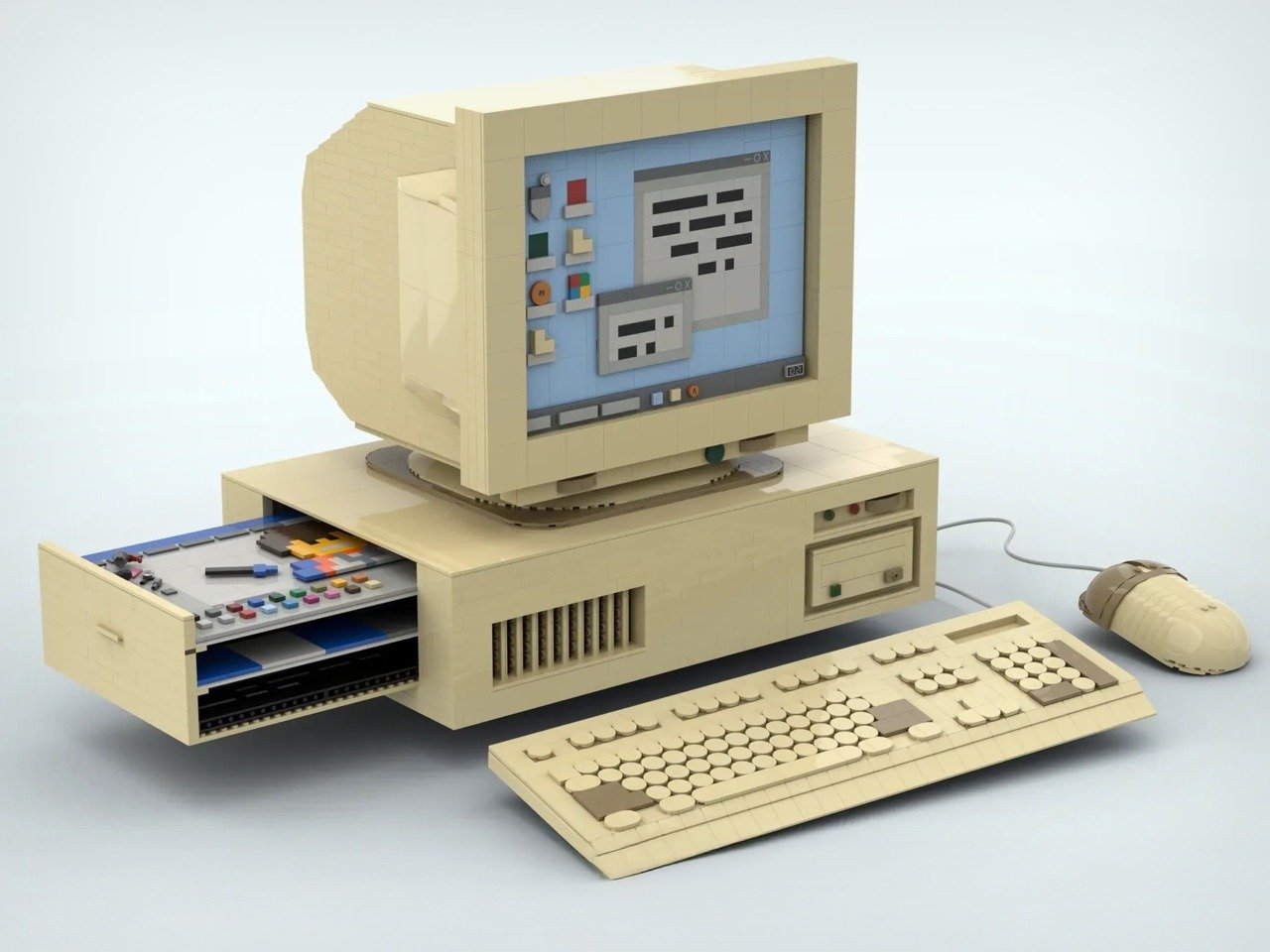As a 34-year old, I’m just about old enough to remember these machines. They were large, bulky, all off-white, and could be found in the computer lab at my school. They barely did much – all we could do was run primitive programs like BASIC and Java on them – that being the entire purpose of ‘computer class’ at school… but what I remember (and cherish) the most, was just the design of those machines.
Designed as an homage to computers from the late 80s and early 90s, this MOC (My Own Creation) by PovedaBricks brings the old-style computers to life. Put together with 2,286 bricks, the build features multiple interchangeable screens, representing different interface elements of the computers back in the day. The build features a clunky CPU, a CRT monitor (placed promptly on top), as well as peripherals like the wired keyboard an mouse… because wirelessness wasn’t a thing for at least another 10 years… and USBs weren’t either!
Designer: PovedaBricks
The charm of the computer lies in its details. More than 2000 bricks brings this computer to life, with every part realistically modeled out – from the chunky nature of the CRT monitor to the off-color keys on the fairly detailed keyboard. For PovedaBricks, this isn’t a piece-by-piece recreation of any specific computer, however, it represents just the generic computers of the time, which ended up getting some of the first GUI-based interfaces just years prior.
The build features multiple screens, which you can access through a tray in the side of the CPU. Pop it open and you see 3 extra screens to choose from, giving you enough range to cover most use-case scenarios for the PC. The first is easily the desktop interface, featuring an obscure set of icons, two open text windows, and the start bar at the bottom. Although too early, you can see a modern minimalist Windows logo on the screen too. The Windows logo of the 90s looked a whole lot different, but then again, creating tiny details in LEGO turns out to be a bit of a challenge, given its block-based nature.
Other screens include a command prompt window – probably the oldest form of computing interfaces – followed by a screen from MS Paint (complete with icons!) as well as a TV signal error, which I personally only remember seeing on televisions. I’m not old enough to remember seeing these on computer monitors, but the colored bars on the screen usually meant an issue in the input signal.
Other cute details involve a pop-out CD tray, although the tray is much smaller in proportion to your traditional CD. The keyboard and mouse are adorably detailed too. The mouse has left and right click buttons, although it’s missing a scroll wheel. The keyboard has a full key layout (as was customary in older keyboard models), with the numpad on the side. The keys were often color coded too, making navigation easier – commonly used keys like Enter, Shift, Caps Lock, and the arrow keys were often tinted beige so that they were easy to locate while typing, eliminating error in the process.
The back (which usually gets neglected in most builds) is filled with detail too, showing the complicated setup on the rear of CPUs, with the fans, vents, and ports all clustered together. The CRT has a panel too, with the VGA cable (presumably) connecting the monitor to the machine. The keyboard and mouse would rely on PS2 connectors (not that kind of PS2), color coded pink and green so you knew which cable went where. This one doesn’t have the color coding, although PovedaBricks could easily make an update.
With just under 2,300 votes, the LEGO Ideas Classics Computer is gradually gaining traction to hitting its next 5k vote milestone. It already has a nod of approval from the LEGO staff, and with just enough support, could hit the eventual 10k vote mark which will send the entry to LEGO’s internal review team. If successful, it’ll get turned into a box set that us 90s nerds can buy and relive the good old days! Go ahead and cast your vote for the LEGO Ideas Classics Computer on the LEGO Ideas website here!
The post Retro-style LEGO Computer comes with interchangeable screens, a CD tray, and peripherals first appeared on Yanko Design.

